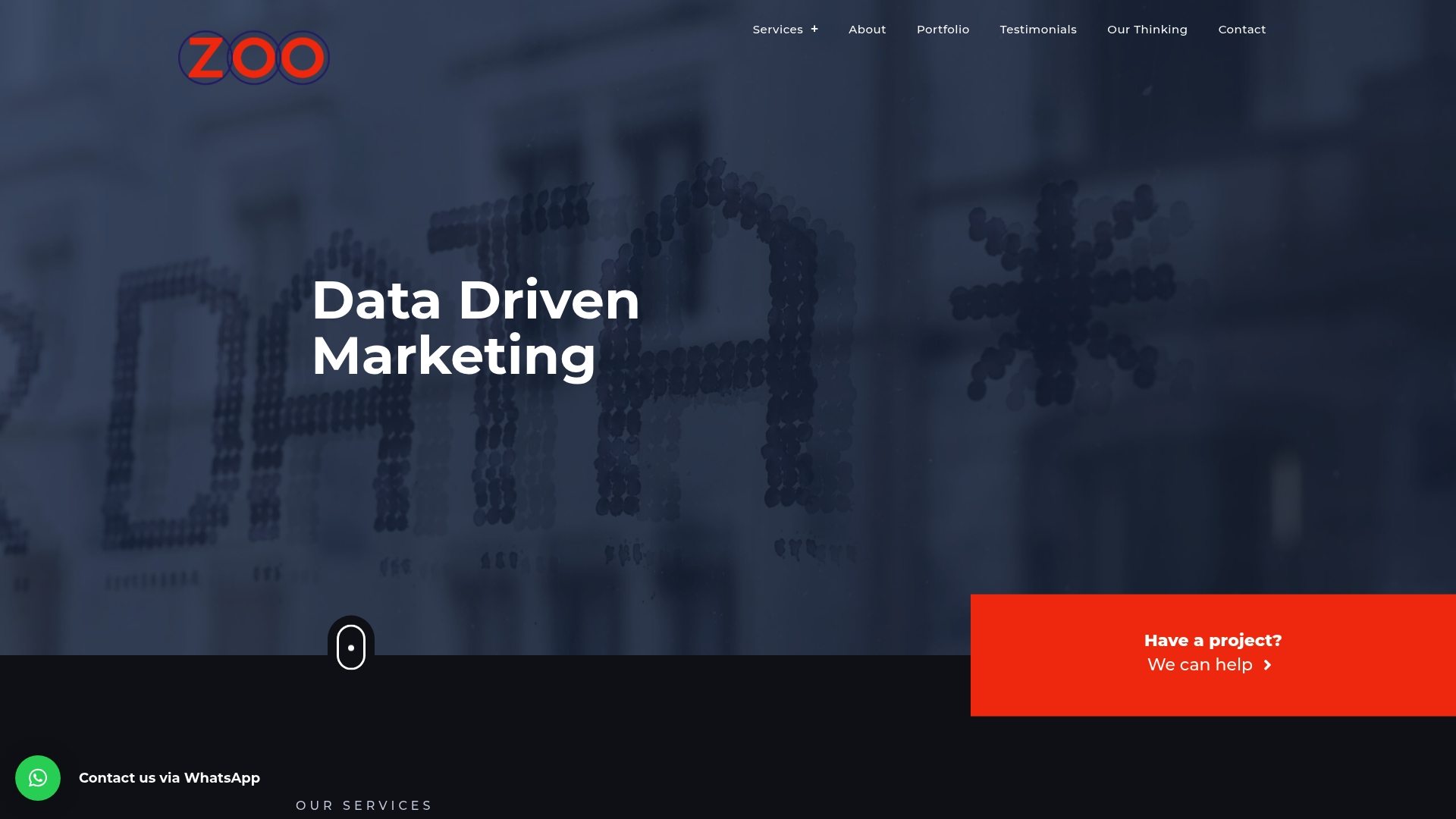Customer segmentation sounds like something only big brands bother with, but it is quietly changing the game for businesses of every size. Nearly every customer has their own quirks and motivations, so you would expect chaos. Yet, companies that use targeted segmentation can see conversion rates soar and marketing waste drop. The real surprise is just how much personalised strategies outperform generic ones and how quickly even small tweaks can lead to massive wins.
Table of Contents
- Defining Customer Segmentation And Its Importance
- The Reasons Behind Customer Segmentation
- How Customer Segmentation Functions In Marketing
- Key Concepts And Types Of Customer Segmentation
- Real-World Applications And Benefits Of Customer Segmentation
Quick Summary
| Takeaway | Explanation |
|---|---|
| Customer segmentation tailors marketing efforts | Segmentation allows targeted campaigns that better address specific customer needs and preferences, increasing engagement and effectiveness. |
| Data collection is essential for effective segmentation | Comprehensive data from various sources, such as purchases and surveys, is necessary to understand distinct customer groups accurately. |
| Segmentation enhances product and service offerings | By recognizing customer differences, businesses can develop personalised products and services that meet specific demands, improving customer satisfaction. |
| Continuous refinement keeps segmentation relevant | Ongoing monitoring and adaptation of segmentation strategies are crucial to remain aligned with changing market trends and customer preferences. |
| Targeted marketing reduces costs and boosts ROI | Focusing marketing efforts on specific segments helps lower acquisition costs and improve conversion rates, leading to better resource allocation and increased profits. |
Defining Customer Segmentation and Its Importance
Customer segmentation represents a strategic approach businesses use to categorise and understand their customer base more effectively. By breaking down a broad customer population into distinct groups with shared characteristics, companies can create more targeted and personalised marketing strategies.
What Exactly is Customer Segmentation?
At its core, customer segmentation involves dividing customers into specific groups based on multiple potential factors. These factors might include demographic information like age and income, behavioural patterns such as purchasing habits, geographic location, or psychographic elements like lifestyle preferences and personal values. Harvard Business Review suggests that effective segmentation goes beyond basic demographics and requires a nuanced understanding of customer motivations.
Why Customer Segmentation Matters
Understanding customer segmentation provides businesses with critical strategic advantages. By recognising different customer groups, organisations can:
- Develop more precise marketing campaigns
- Improve product development strategies
- Create personalised customer experiences
- Allocate resources more efficiently
- Predict customer behaviour more accurately
The primary goal is not just categorisation but meaningful insight generation. When businesses truly understand their customer segments, they can craft messaging, products, and services that resonate deeply with specific audience groups.
Strategic Applications of Customer Segmentation
Companies across various industries leverage customer segmentation to drive business growth. McKinsey & Company emphasises that segmentation allows businesses to move beyond generic approaches and create targeted strategies that speak directly to customer needs. This approach transforms marketing from a broad broadcast method to a precision instrument of customer engagement.
The Reasons Behind Customer Segmentation
Customer segmentation is far more than a marketing buzzword. It represents a sophisticated strategic approach that enables businesses to understand and respond to the complex, diverse needs of their customer base with precision and empathy.
Understanding Complex Customer Dynamics
Customers are not monolithic entities but intricate individuals with unique preferences, behaviours, and motivations. Forrester Research highlights that modern businesses must move beyond generic strategies and develop nuanced approaches that recognise individual customer differences. By breaking down their audience into meaningful segments, companies can develop targeted strategies that speak directly to specific customer groups.
Economic and Strategic Benefits
The economic rationale for customer segmentation is compelling. By understanding different customer groups, businesses can:
- Optimise marketing spend by targeting specific segments
- Reduce customer acquisition costs
- Increase customer retention rates
- Develop more personalised product offerings
- Improve overall customer satisfaction
These strategic advantages translate into measurable financial outcomes.
This table outlines the economic and strategic benefits of customer segmentation, summarising the advantages discussed in the article and how they positively impact business operations.
| Benefit | Description |
|---|---|
| Optimised Marketing Spend | Directs budget towards high-potential segments, reducing wastage |
| Lower Acquisition Costs | Improves targeting, decreasing the price to secure new customers |
| Higher Customer Retention | Supports strategies that keep customers loyal |
| Personalised Product Offerings | Enables development of products meeting specific segment needs |
| Improved Customer Satisfaction | Enhances relevancy, increasing overall contentment with services |
| Increased Conversion Rates | Raises likelihood of turning prospects into clients |
| Better Resource Allocation | Ensures staff and spend are used where they matter most |
| Targeted marketing approaches can significantly improve conversion rates and reduce wasted resources on ineffective, broad-based campaigns. |
Data Driven Decision Making
McKinsey & Company demonstrates that data-driven segmentation allows businesses to transform raw customer information into actionable insights. By analysing customer data across multiple dimensions, organisations can predict behaviour, anticipate needs, and create proactive strategies that position them ahead of competitors. This approach transforms customer understanding from a reactive process to a predictive and strategic capability.
How Customer Segmentation Functions in Marketing
Customer segmentation operates as a sophisticated analytical process that transforms raw customer data into actionable marketing intelligence. By systematically categorising customers, businesses can develop more precise and effective marketing strategies.
Data Collection and Analysis
Gartner Research reveals that successful customer segmentation begins with comprehensive data collection. Businesses gather information from multiple sources including:
- Purchase history
- Website interactions
- Social media behaviour
- Customer surveys
- Demographic information
This multifaceted approach ensures a holistic understanding of customer characteristics and behaviours. Advanced analytics tools then process this data, identifying patterns and commonalities that distinguish different customer groups.
Segmentation Strategies and Implementation
Effective customer segmentation requires strategic implementation. Marketers typically divide customers based on several key dimensions:
- Behavioural characteristics
- Demographic profiles
- Geographic locations
- Psychographic attributes
- Customer value and potential
By understanding these nuanced segments, businesses can read more about developing targeted marketing strategies, creating personalised experiences that resonate with specific customer groups.
Continuous Refinement and Adaptation
Harvard Business Review emphasises that customer segmentation is not a static process but a dynamic, evolving approach. Successful organisations continuously monitor and update their segmentation models, ensuring they remain relevant in a rapidly changing market landscape. This adaptive strategy allows businesses to stay ahead of shifting customer preferences and emerging market trends, maintaining a competitive edge through precision marketing.
Key Concepts and Types of Customer Segmentation
Customer segmentation encompasses multiple sophisticated approaches that allow businesses to dissect and understand their diverse customer populations with remarkable precision. Each segmentation type offers unique insights into customer behaviour and potential.
Below is a table highlighting the main types of customer segmentation mentioned in the article, along with their core focus and real-world examples found in South African business contexts.
| Type of Segmentation | Core Focus | Example Application |
|---|---|---|
| Demographic Segmentation | Age, gender, income, education | Retailers targeting youth with special offers |
| Behavioural Segmentation | Purchase behaviour, brand interactions | E-commerce sites recommending trending products |
| Psychographic Segmentation | Lifestyle, values, personality | Travel companies offering eco-friendly tours |
| Geographic Segmentation | Location, region, urban/rural | Insurance firms tailoring products to specific provinces |
| Technographic Segmentation | Technology use, digital habits | Mobile networks marketing data bundles based on device usage |
Fundamental Segmentation Categories
MIT Sloan Management Review identifies several core segmentation strategies that businesses can leverage. These fundamental categories help organisations map customer characteristics with strategic objectives. Segmentation is not about creating divisions but understanding connections.
Comprehensive Segmentation Types
Businesses typically employ multiple segmentation approaches to gain comprehensive customer understanding:
![]()
- Demographic Segmentation: Categorising customers by age, gender, income, education
- Behavioural Segmentation: Analysing purchasing patterns, brand interactions, loyalty
- Psychographic Segmentation: Understanding lifestyle, values, personality traits
- Geographic Segmentation: Dividing customers by location, region, urban/rural settings
- Technographic Segmentation: Examining technology usage and digital behaviour
Advanced Segmentation Strategies
Harvard Business Review suggests that modern businesses are moving towards more nuanced, data-driven segmentation models. Learn more about implementing advanced marketing strategies that incorporate these sophisticated segmentation techniques. By combining multiple segmentation approaches, organisations can create highly detailed customer profiles that enable precision targeting and personalised experiences. The goal is transforming raw data into meaningful, actionable customer insights that drive strategic decision making.
Real-World Applications and Benefits of Customer Segmentation
Customer segmentation transforms abstract data into practical business strategies that drive meaningful organisational growth. By understanding specific customer groups, businesses can develop targeted approaches that deliver exceptional value.
Industry-Specific Segmentation Strategies
ResearchGate demonstrates how different industries leverage customer segmentation uniquely. Retail sectors might focus on purchasing frequency, while service industries prioritise customer lifetime value. Each industry develops segmentation models tailored to their specific business objectives.
Practical Application Scenarios
Businesses across various sectors implement customer segmentation to achieve strategic advantages:
- E-commerce platforms personalising product recommendations
- Financial services developing targeted loan offerings
- Healthcare providers creating specialised patient communication strategies
- Technology companies designing user experience improvements
- Hospitality businesses crafting customised marketing campaigns
Measuring Segmentation Impact
Learn more about marketing analytics for small businesses to understand how segmentation translates into tangible business outcomes. Effective segmentation directly correlates with improved customer engagement, increased conversion rates, and enhanced marketing efficiency. By precisely understanding customer groups, organisations can allocate resources more effectively, reduce marketing waste, and create more resonant customer experiences that drive sustainable business growth.

Unlock Real Power from Customer Segmentation with Zoo Digital
Is your business struggling to turn customer segmentation data into real marketing results? Many brands get stuck understanding data but find it hard to take action. As discussed in this article, achieving true insight means connecting precise segmentation, data-driven decisions, and dynamic marketing strategies. Without the right approach, businesses lose efficiency and waste budget on broad campaigns that miss the mark.

Let Zoo Digital help you bridge that gap. Our team specialises in tracking setup, analytics, digital ad strategy, as well as marketing automation. We help you transform your customer segments into actionable campaigns that increase conversions. Visit Zoo Digital now to start turning insights into business growth. If you are ready to experience the difference that smart segmentation and data-driven marketing can make, partner with us today and see your marketing deliver real results. Your journey to smarter, more profitable campaigns starts here.
Frequently Asked Questions
What is customer segmentation?
Customer segmentation is the process of dividing a broad customer population into distinct groups based on shared characteristics such as demographics, behaviours, and preferences, allowing businesses to tailor marketing strategies effectively.
Why is customer segmentation important for businesses?
Customer segmentation is crucial as it helps businesses develop targeted marketing campaigns, enhance product development strategies, create personalised customer experiences, and allocate resources efficiently, ultimately leading to better customer engagement and satisfaction.
What are the main types of customer segmentation?
The main types of customer segmentation include demographic segmentation, behavioural segmentation, psychographic segmentation, geographic segmentation, and technographic segmentation, each providing unique insights into customer behaviour.
How can businesses implement customer segmentation effectively?
Businesses can implement customer segmentation by collecting comprehensive data from various sources, analysing that data to identify patterns, and continuously refining their segmentation models to adapt to changing customer preferences and market trends.
Recommended
- How to Use Marketing Analytics for Small Businesses in 2025 – Zoo Digital
- Digital Marketing for Beginners: 2025 Guide for Small Businesses – Zoo Digital
- Digital Marketing Terms Explained for Small Businesses 2025 – Zoo Digital
- How to Build a Marketing Strategy for Small Businesses in 2025 – Zoo Digital

